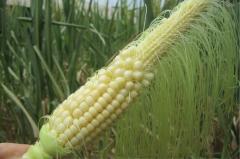Feeding This Year’s Corn Silage Crop
Feeding This Year’s Corn Silage Crop

Preliminary reports indicate that this year’s corn silage crop in some locations across the state may have suffered from the lack of early rains during pollination resulting in spotty or lack of ear development and/or reduced plant growth. In normal years, the ear with its corn grain accounts for approximately half of the weight harvested and an economical source of starch and energy for livestock. With reduced yields of grain and possibly forage component, modifications to this year’s feeding programs for not only the milking herd, but also dry cows and heifers, may be necessary.
With little ear development, the amount of energy lost because of lack or reduced grain development will need to be replaced with the addition of an alternative energy source, such as additional corn grain or other by-products in the rations at the time fed. Giving some thought and having preliminary conversations with your nutritionist can help in developing a preliminary plan for the most economical feeding program going forward. This is extremely important to capitalize on today’s more favorable milk prices. The key is to be proactive and not reactive to the cards mother nature has dealt.
- Assess potential ear and forage yield (pollination/ear development and forage yields) by scouting corn silage fields. Preliminary reports indicate that grain and forage yields vary not only between fields, but also within a field. Some are also noting variation within the corn row itself.
- Fields normally earmarked for corn grain harvest may need to be harvested as silage to harvest an adequate amount of silage to feed all cattle.
- At and after harvest, sample and test chopped silage to determine its nutrient content and use these results to balance rations accordingly. If grain development was limited, more “grain” will need to be added to these rations at the time of feeding. Checking for NDF digestibility might also be warranted.
- Author: Dr. Donna M. Amaral-Phillips
